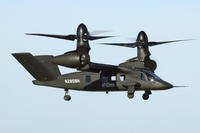WASHINGTON — The U.S. military struck three facilities in Iraq on Tuesday, targeting an Iranian-backed militia in retaliation for missile and drone attacks on American troops in Iraq and Syria over the past several days, Defense Secretary Lloyd Austin said.
The U.S. strikes hit militia facilities in Jurf al-Sakhar, which is south of Baghdad, al-Qaim and another unnamed site in western Iraq, two U.S. officials said.
“At President Biden’s direction, U.S. military forces conducted necessary and proportionate strikes on three facilities used by the Iranian-backed Kataib Hezbollah militia group and other Iran-affiliated groups in Iraq,” Austin said in a statement. “These precision strikes are in direct response to a series of escalatory attacks against U.S. and Coalition personnel in Iraq and Syria by Iranian-sponsored militias.”
The strikes came hours after the U.S. said militants fired two one-way attack drones at al-Asad Air Base, injuring U.S. service members and damaging infrastructure. And they followed the militia's most serious attack this year on the air base, when it launched multiple ballistic missiles on Saturday.
U.S. Central Command said the U.S. attack targeted headquarters, storage, and training locations for rocket, missile, and one-way attack drone capabilities of the group.
In Tuesday's drone attacks against al-Asad, U.S. defenses were able to intercept the first drone but it crashed on base and the second drone hit the base, U.S. officials said. Injuries, including traumatic brain injuries and smoke inhalation, were reported to be minor. The officials spoke on the condition of anonymity to provide details that had not been announced publicly.
During Saturday's larger-scale attack, multiple ballistic missiles and rockets launched by Iranian-backed militants targeted al-Asad, but most were intercepted by air defense systems there, Sabrina Singh, Pentagon spokesperson, told reporters on Monday. She said other munitions hit the base.
Al-Asad is a large air base in western Iraq where U.S. troops have trained Iraqi security forces and now coordinate operations to counter the Islamic State group.
Singh said Saturday’s attack was a “barrage.” It was the first time since Nov. 20 that Iranian proxy forces in Iraq had fired ballistic missiles at U.S. bases in Iraq.
A coalition of militias calling itself the Islamic Resistance in Iraq has taken credit for a number of the attacks on U.S. forces. Kataib Hezbollah is one of the groups within that umbrella organization.
But the repeat use of ballistic missiles marks an escalation, said Behnam Ben Taleblu, a senior fellow at the Foundation for Defense of Democracies who specializes in Iran. The militias have typically used drones and rockets to attack. Tehran supplied Shia militias in Iraq with short-range and close-range ballistic missiles in 2019, Taleblu said, but until November’s attacks they had not been used.
Short-range missiles have a range of up to 300 kilometers (186 miles), and close-range missiles have a range of up to 1,000 kilometers (621 miles).
“The militias displayed this in social media early November, fired in mid-November, and again fired in a larger volley at al-Asad” last week, Taleblu said.
Saturday’s ballistic missile attack on al-Asad injured four U.S. service members, all of whom have returned to duty. One Iraqi security forces member was also injured.
Since the Israel-Hamas war began in early October there have been more than 151 attacks on U.S. facilities in Syria and Iraq. According to the Pentagon, two attacks took place on Monday and included multiple rockets fired at U.S. and coalition troops at Mission Support Site Euphrates in Syria and a single rocket fired at the Rumalyn Landing Zone in Syria. Neither attack resulted in casualties or damage.
The U.S. struck back at the militia groups late last month, ordering a round of retaliatory strikes after three U.S. service members were injured in a drone attack in northern Iraq. Kataib Hezbollah claimed credit for the attack, carried out by a one-way attack drone.
The U.S., in response, hit three sites, destroying facilities and likely killing a number of Kataib Hezbollah militants, according to the White House at the time.











